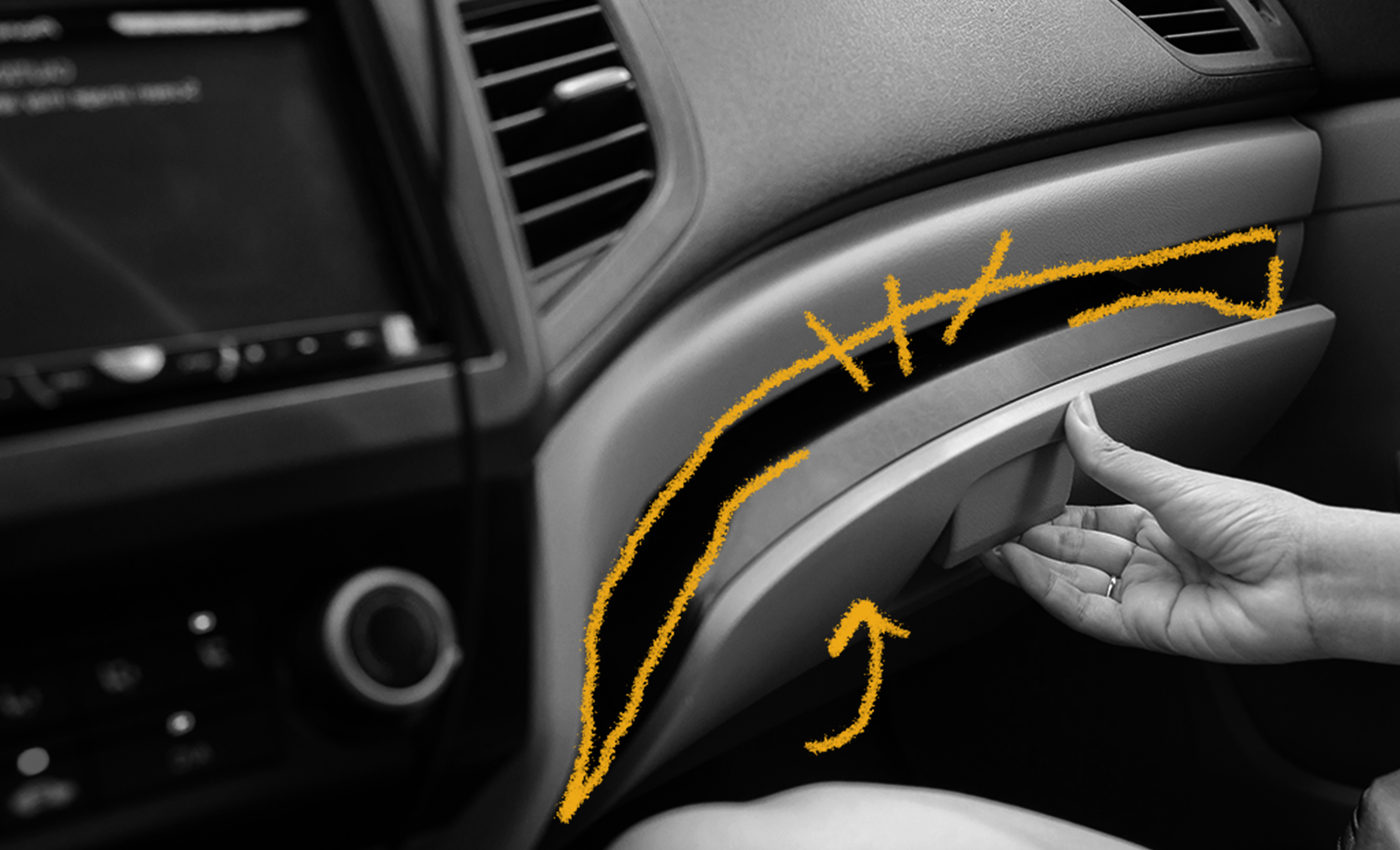Early cars were often considered “horseless carriages” and early automobile manufacturers actively tried to distance themselves from this reputation. Packard Motor Company did so by adding a storage compartment in the dash. Other manufacturers followed suit with baskets, satchels, hampers, or built-in drawers. The idea of using the provided storage to house one’s driving gloves is credited to Dorothy Levitt, one of Britain’s first female racing drivers, who wrote a tip in her book, The Woman and the Car, that a car’s storage compartment could be used to hold a woman’s driving gloves. By the 1930s, the glove compartment had become a standard car feature. Over time, driving gloves became less of a necessity, which opened up new possibilities for the glove box, and car manufacturers began to create all sorts of innovations, including a glove compartment with a pop-up makeup compact and lighted mirror overhead and a glove box with a mounted voice recorder. The 1957 Cadillac Eldorado Brougham even featured a glove compartment with a makeup case, a notebook, a cigarette case, an atomizer for perfume, and six stainless-steel shot glasses that could be held down by a magnetic strip! As the years rolled by, glove compartments evolved into a catch-all storage area within the car and its features became more utilitarian in nature (think locking mechanisms and indentations for holding beverages). Glove compartments remain largely unchanged today, although some recent innovations are being tested out, including deeper compartments designed to hold modern essentials like laptops and tablets.

Your go-to guide for weird history facts
Subscribe to the FREE daily email that makes learning about history fun.


